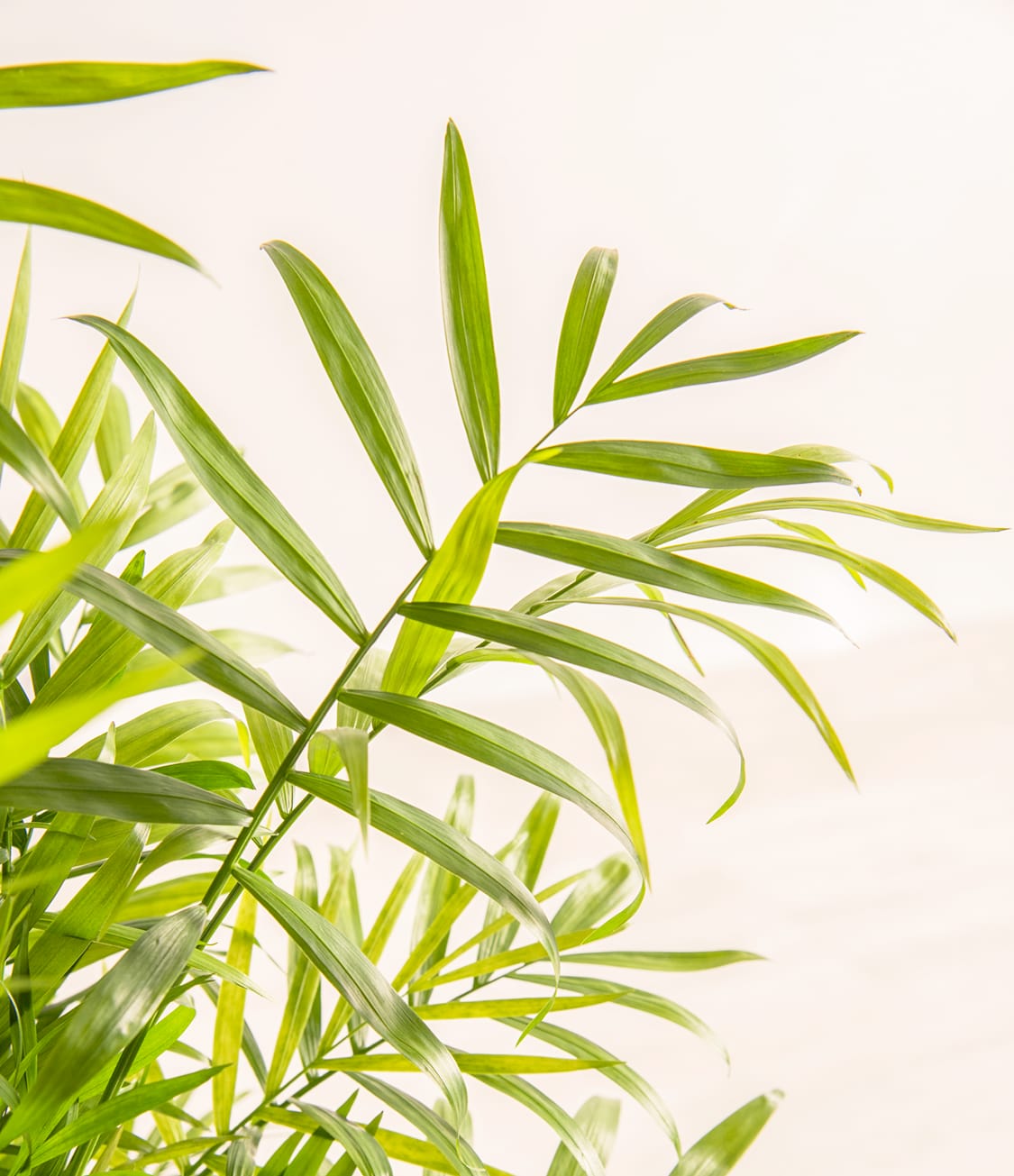Plant care library / Parlor Palm
How to Care for a Parlor Palm Plant
Shop this plantAbout Parlor Palm
Collected since the Victorian era, Neanthe Bella Palm has been historically loved and desired, traditionally displayed as the centerpiece of the most impressive room in the house - the parlor, giving it the nickname ‘Parlor Palm’. Native to the rainforests of Mexico and Guatemala, Neanthe Bella Palm elegantly thrives where others can’t, making it the perfect palm for bringing tropical magic inside. It is as loved and desired today as it has always been thanks to its beautifully lush texture and delicate vibe.
Other common names
- Neanthe Bella Palm
- Chamaedorea Elegans
How Often Should I Water My Parlor Palm?
With easyplant, watering your Parlor Palm is simple. Make sure to check the easyplant reservoir once a month and fill it when empty, and you're all set!
Parlor Palm Light Needs
Parlor Palm grows best in a space with bright indirect light, where the sun rays are diffused, and can also adapt to spaces with medium to low light. Avoid placing it in spaces without natural light or with direct sunlight.
Parlor Palm Plant Care
On your Neanthe Bella Palm’s first few days at home, it may lose several leaves, or leaves will turn yellow. This is no reason for concern. Simple shake off or cut the leaf, and look forward to new and better adjusted leaves to grow.
To help it grow optimally and evenly, occasionally dust the leaves and rotate the pot by a ¼ turn once a month. To maintain its aesthetic shape and height, you may periodically prune it to your liking.
How Big Do Parlor Palm Plants Grow?
Parlor Palm grows slowly and steadily reaching two feet tall within a few years, and can ultimately reach up to six feet tall and three feet wide. When it grows several new leaves at a time, it will lose one or two leaves from the bottom. Even after adjustment, it will occasionally lose leaves.
Parlor Palms often take many years to reach their full height. The speed of your Parlor Palm’s growth depends on a few different factors, the most important being the amount of sunlight it receives. In lower-light areas, the Parlor Palm will grow more slowly.
Temperature & Humidity
Parlor Palms prefer temperatures between 60 and 85 degrees Fahrenheit, which is similar to the temperatures found in their natural habitat. They tend to be more cold-tolerant than other tropical plants and can survive in temperatures as low as 50 degrees for short periods. Parlor Palms can live in average humidity, as well. Unlike other tropical plants, maintaining a highly humid environment is not a necessity. However, they may grow better and thrive in a more humid environment.
Are Parlor Palm Toxic for Pets & Kids?
Parlor Palm is non-toxic and safe for humans and animals alike.
Troubleshooting Common Problems with Parlor Palm
If you notice the leaves are becoming brown or crispy, relocate the pot to a less directly lit location. Discolored or spotty leaves can indicate pests like aphids, spider mites, scale, or mealy bugs. It can also be a sign of fungus, or can sometimes be caused by overwatering.
Frequently Asked Questions about Parlor Palm Plant
- What are the benefits of a parlor palm?Parlor Palms are great at filtering the air in your home and are even ranked by NASA as one of the best plants for cleaning indoor air. Parlor Palms can actually remove toxins like formaldehyde, benzene, and even carbon monoxide. This means they’re a great plant if you have kids in your home, as kids can be more sensitive to the negative effects of these toxins.
- How long can a parlor palm live?You can expect your Parlor Palm to live between 15 and 20 years, if it’s well taken care of. If you are able to mimic the conditions of its natural habitat, it may live even longer. Some people report having a Parlor Palm for 40 or more years!
- Is a parlor palm easy to take care of?Parlor Palms are a popular houseplant because they are easy to care for. Unlike other tropical plants, they can thrive in lower light conditions, and require slightly less frequent watering and humidity requirements. They’re also a little more tolerant of the cold. It’s important to remember that they are tropical plants, though, so try to mimic the warm, moist conditions that they love.
